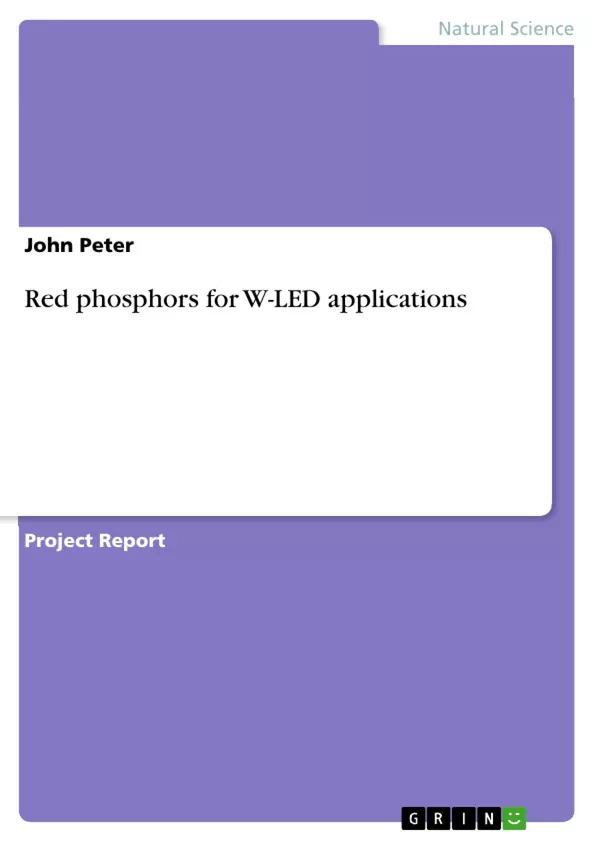Trivalent rare-earth-ion-activated molybdate based phosphors have attracted great attention for solid-state lighting applications by virtue of their long lifetimes, and efficient luminescence property. The rare-earth ions are represented by a partly filled 4f shell that is completely shielded by 5s2 and 5p6 orbitals. Therefore, emission transitions provide sharp intense lines in the optical spectra [1, 2].
The use of rare-earth element-based phosphor, based on ‘‘line-type’’ f–f transitions, can narrow the emissions to the visible range, resulting in high efficiency and a high-lumen equivalence. In recent years, a flourishing care is concentrated on Li3Ba2Gd3-x(MoO4)8 host matrix for luminescent ions in the interest of their excellent chemical and thermal stability and favourable luminescence characteristics compared to the sulfide- and nitride-based materials.
Moreover, these are environmentally friendly as no toxic gases like sulphide are given out. Li3Ba2Gd3-x(MoO4)8 occur in monoclinic crystal system with space group C2/c in a disordered structure [3].
For this research paper, a series of Li3Ba2Gd3–xPrx (MoO4)8 (x = 0.01, 0.03, 0.05, 0.07and 0.09 mol) and Li3Ba2Gd3–xSmx (MoO4)8 (x = 0.02, 0.04, 0.06, 0.08 and 0.10 mol) red phosphors were synthesized by conventional solid state reaction method.
Inhaltsverzeichnis (Table of Contents)
- 1. Introduction
- 2. Experimental Method
- 2.1 Preparation of Phosphors
- 2.2 Characterization
- 3. Results and discussion
- 3.1 XRD and size distribution characterization
- 3.2 FTIR analysis
- 3.3 Photoluminescence Properties of Li3Ba2Gd3 (MoO4)8: Pr³+
- 3.3.1 The excitation and emission spectra of Li3Ba2Gd3 (MoO4)8: Pr³+ phosphor
- 3.3.2 The excitation and emission spectra of Li3Ba2Gd3 (MoO4)8: Sm³+ phosphor
- 4. Conclusion
Zielsetzung und Themenschwerpunkte (Objectives and Key Themes)
This research investigates the luminescent properties of Li3Ba2Gd3 (M0O4)8 activated with Pr³+ and Sm³+ ions. The primary objective is to synthesize and characterize these materials as potential red phosphors for white light-emitting diode (LED) applications.
- Synthesis and characterization of Li3Ba2Gd3-xPrx (M0O4)8 and Li3Ba2Gd3-xSmx (MoO4)8 phosphors
- Investigation of the structural and morphological properties of the synthesized materials
- Analysis of photoluminescence (PL) and photoluminescence excitation (PLE) spectra
- Determination of the optimal doping concentration for Pr³+ and Sm³+ ions
- Evaluation of the potential of these phosphors for white LED applications
Zusammenfassung der Kapitel (Chapter Summaries)
Chapter 1: Introduction provides an overview of the current research on trivalent rare-earth-ion-activated molybdate-based phosphors for solid-state lighting applications. The text highlights the advantages of using rare-earth ions for luminescence and emphasizes the importance of the Li3Ba2Gd3 (M0O4)8 host matrix due to its excellent chemical and thermal stability, favorable luminescence characteristics, and environmental friendliness.
Chapter 2: Experimental Method details the synthesis procedure for the Li3Ba2Gd3-xPrx (M0O4)8 and Li3Ba2Gd3-xSmx (MoO4)8 phosphors using a mechanochemically assisted high-temperature solid-state reaction method. The chapter also outlines the characterization techniques employed, including X-ray powder diffraction (XRD), Fourier Transform infrared spectroscopy (FTIR), scanning electron microscopy (SEM), and photoluminescence (PL) spectroscopy.
Chapter 3: Results and discussion presents the results of the characterization studies and discusses the luminescent properties of the synthesized phosphors. The analysis includes examination of the crystal structure, particle size distribution, FTIR spectra, excitation and emission spectra, and the determination of the optimal doping concentration for Pr³+ and Sm³+ ions.
Schlüsselwörter (Keywords)
Red phosphors, Li3Ba2Gd3 (MoO4)8, Pr³+, Sm³+, solid-state reaction, photoluminescence, excitation spectra, emission spectra, white LEDs, doping concentration, luminescence properties.
- Arbeit zitieren
- John Peter (Autor:in), 2015, Red phosphors for W-LED applications, München, GRIN Verlag, https://www.hausarbeiten.de/document/306326


